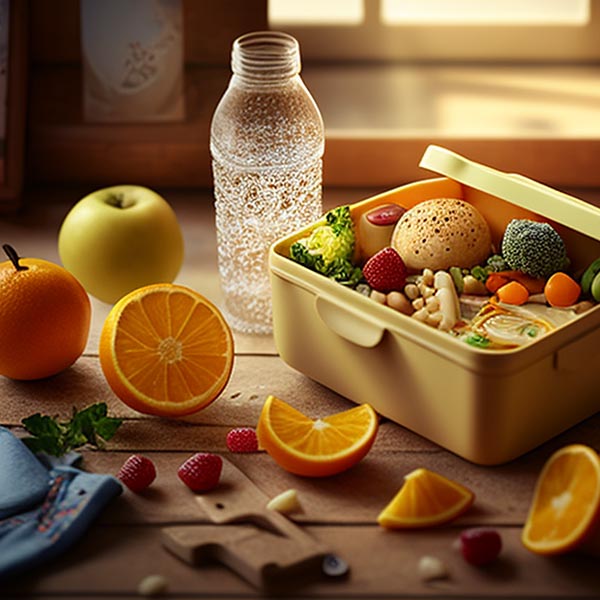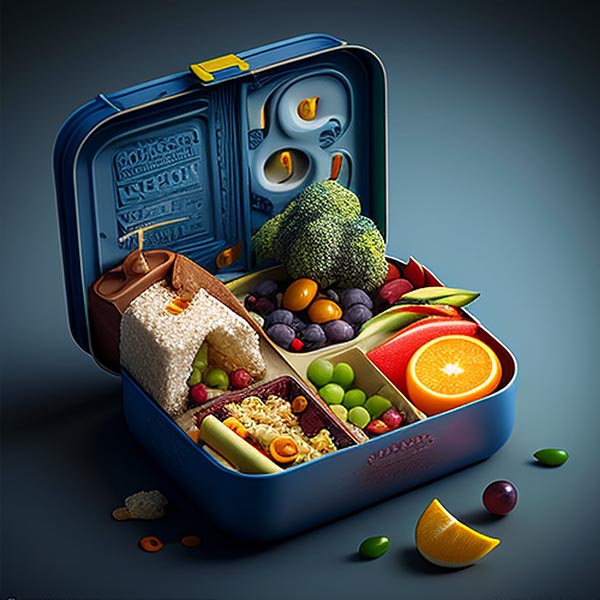FOOD GUIDELINES
At Angels Montessori School we want to focus on ensuring that parents give their children health food. High quality food ensures proper health and growth for your child. Please try to avoid junk food, excessive sugar and ready made meals unless is is an emergency.

SNACKS
Two snacks are provided free of charge by the school daily. Snacks are usually crackers, biscuits, fruit and vegetables with dip. Some parents send their own snacks which we would more than happy to feed your child. However don't send too many snacks which will make them too full to eat lunch. Avoid junk food like candy bars, and chips for snacks. Raisins, veggies, fruits are more appropriate.
SCHOOL LUNCH
Currently the school offers a optional extra cost " Hot Lunch " program everyday of the week. We cook it in house and try to make it as healthy as possible. This is a delicious lunch. The lunch menu is posted in the PDF section of this web site and the school notice board. Lunch is a ceremonial meal at school, with several key lessons based on developing independence.
HOME LUNCH
If you are packing a lunch at home, pack a well balanced, nutritional meal, excluding candy and other highly sugared foods with excessive quantities of additives, salt and preservatives. Nutritious foods include whole grain products, fresh fruits and vegetable and proteins. Chips, nuts and other food with choking hazards not appropriate for young children.
PEANUT BUTTER
Due to severe allergies and hyper activity, we strongly discourage peanut butter in our school. While it may not affect your child, it can have serious effects on other children possibly causing a life and death situation. Try to use alternatives like Pâté, Edamame and Feta Spread and Hummus. How about making your own lentil spread?
NEW FOOD
We are glad to assist you in planning and implementing the introduction of new foods to your child. Each new food should be introduced at home for four days before sending it to school. This will allow you to check for allergies or other negative reactions, aside from dislike, such as vomiting. Please ensure that the caregiver is informed about the times and amounts of food to be given.
LUNCH CONTAINERS
Please ensure that your child's name is clearly marked on lunch boxes and interior containers that your child can open and close. If you want us to warm the food, make sure the containers are microwaveable. Better still, consider using a 'Keep Warm' Bento Lunch Box. We encourage avoiding plastic bags as we aim to minimize waste. Reusable containers that your child can open and close are the best choice

FOOD TO AVOID
At our school, we strongly encourage parents to provide nutritious lunches for their children. Research shows that making healthy food choices can have a positive impact on behavior, concentration, and overall health. It's important to avoid certain additives that can be harmful to children's health, both now and in the future. For instance, artificial colors like Red #40, sweeteners such as High Fructose Corn Syrup, and flavoring agents like Sodium Nitrate and MSG can potentially cause health problems later in life. By prioritizing healthy options, we can help set our children on a path toward lifelong wellness.
WHAT FOOD TO PACK
When packing your child's lunch, it's important to plan ahead and choose healthy, appealing options. One effective strategy is to create a monthly lunch menu. Set aside some time on a weekend to brainstorm ideas and jot down a list of meals to prepare. When selecting foods, aim for 100% juice and pay attention to presentation. If the food doesn't look appetizing, your child may be less likely to eat it. Consider cooking some fresh items the night before and packing them for lunch. Kids often prefer large pieces of food over mushy or mixed dishes. Try mixing and matching items to keep things interesting, but be sure to keep food groups separate. Soups can be a great choice in the winter months; they can be easily reheated and kids often enjoy a warm, homemade soup.



